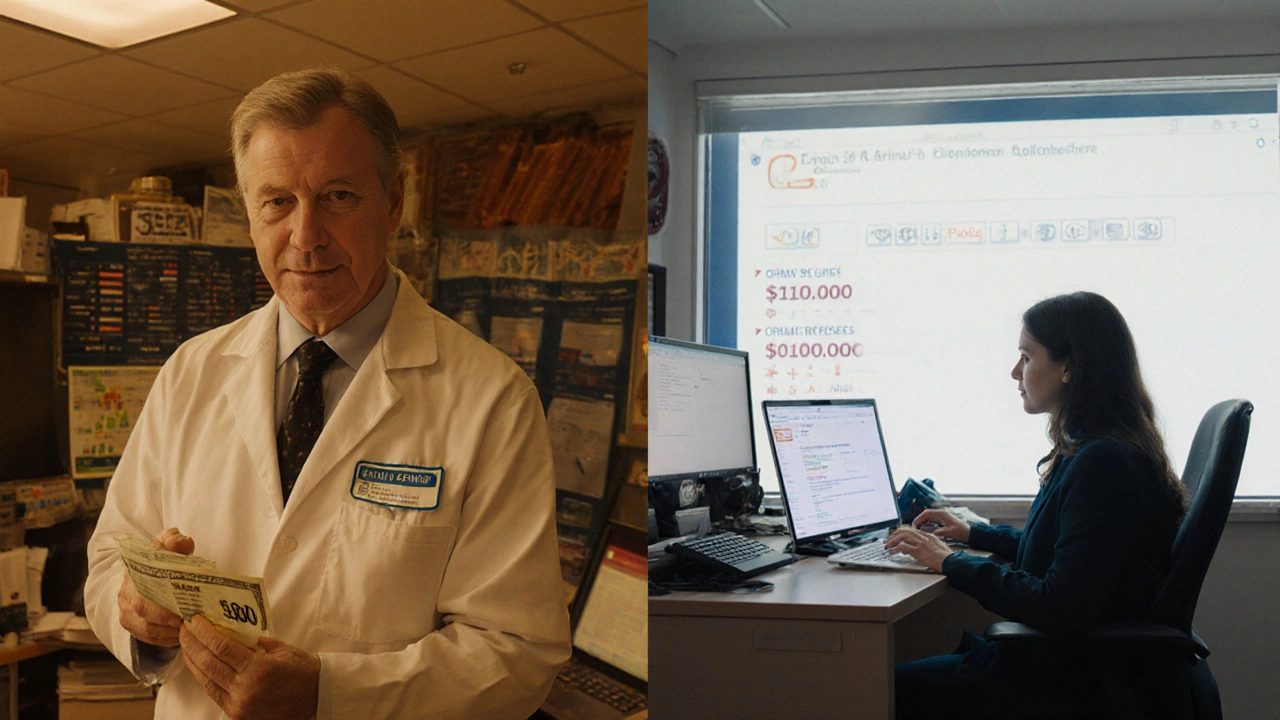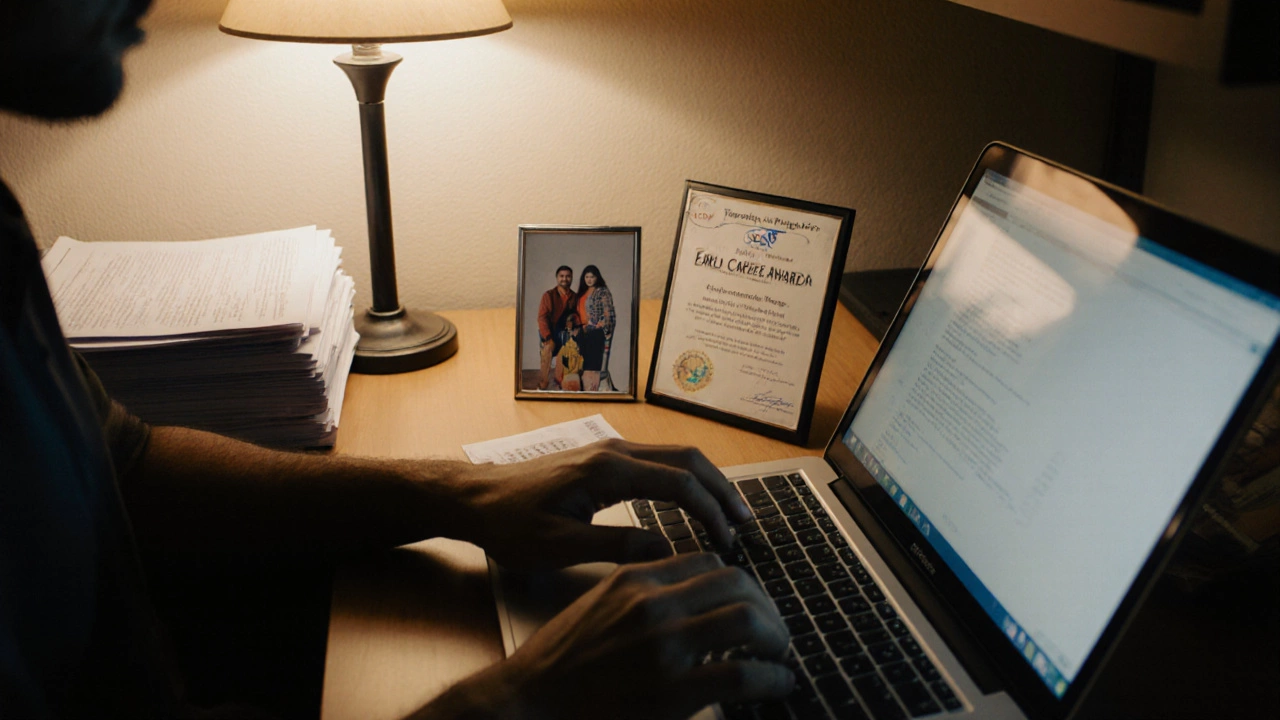Healthcare Researcher Salary Comparison Tool
Select Your Research Sector
Select Your Country
Comparison Results
What This Means For You
Ever wonder how the people running clinical trials, analyzing disease patterns, or testing new drugs actually get paid? It’s not as simple as a regular paycheck. Healthcare researchers don’t work for one employer like a nurse or doctor. Their income comes from a patchwork of sources - grants, salaries, contracts, and sometimes even side gigs. And the system is anything but uniform.
Most researchers are paid through grants, not salaries
The biggest source of income for healthcare researchers isn’t a monthly wage from a hospital or university. It’s grant money. These are funds given by government agencies, private foundations, or pharmaceutical companies to support specific research projects. Think of it like funding a movie - the grant pays for the crew, equipment, and time, not the director’s personal salary.
In the U.S., the National Institutes of Health (NIH) handed out over $47 billion in research grants in 2024. In the UK, the Wellcome Trust and UK Research and Innovation (UKRI) do the same. In India, the Indian Council of Medical Research (ICMR) and Department of Biotechnology (DBT) fund hundreds of projects each year. But here’s the catch: the grant money doesn’t always go directly to the researcher. It goes to their institution - the university, hospital, or lab - and then the institution pays them.
So if you’re a postdoc running a study on diabetes treatments, your salary might be covered by a five-year NIH grant. But if that grant runs out and no new one is approved, your pay stops. That’s why many researchers spend 20-40% of their time writing grant proposals. It’s not just science - it’s a constant fundraising job.
Academic researchers get a base salary, but it’s often low
If you’re working at a university as a professor or senior scientist, you likely get a fixed salary from the school. But that salary is rarely tied to how much research you do. It’s usually based on your rank - assistant professor, associate, full professor - and your department’s budget.
In the U.S., the average salary for a healthcare researcher in academia is around $95,000 per year. In India, it’s closer to ₹12-18 lakh annually for a professor at a government medical college. That sounds decent until you realize that most of these people are working 60-70 hours a week. And many start with postdoctoral positions earning just $45,000-$55,000 in the U.S. or ₹5-7 lakh in India - barely above entry-level pay, despite having a PhD and years of training.
At private universities, salaries can be higher, but funding is tighter. At public institutions, pay is stable but slow to grow. And if you’re not tenured, your job security depends entirely on your ability to keep bringing in grants. One failed proposal can mean a year of uncertainty.
Industry researchers have steadier pay - but less freedom
Many healthcare researchers work for pharmaceutical companies, medical device makers, or biotech startups. These are real jobs with real paychecks. Salaries here are usually higher than in academia. A senior research scientist at Pfizer or Novartis can earn $120,000-$180,000 in the U.S. In India, top industry roles pay ₹20-35 lakh per year.
But there’s a trade-off. In industry, you’re not free to study whatever you want. Your research is tied to the company’s product pipeline. If your drug candidate fails in Phase III trials, your project gets shut down - and so might your role. You’re still doing science, but it’s science with a profit motive. You might be asked to focus on incremental improvements to existing drugs rather than risky, groundbreaking work.
Still, for many, the stability is worth it. No more writing endless grant applications. No more worrying if next year’s funding will come through. Just a salary, benefits, and a clear career path - if you’re willing to play by corporate rules.

Government and public health researchers are paid like civil servants
Researchers working for agencies like the CDC (U.S.), NHS (UK), or ICMR (India) are government employees. Their pay follows public sector salary scales. In the U.S., CDC scientists start around $70,000 and can reach $130,000 with experience. In India, scientists at ICMR or CSIR labs earn ₹10-20 lakh per year, depending on grade and seniority.
The upside? Job security. Benefits. Pension plans. And the chance to work on public health issues that affect millions - like vaccine rollout, outbreak tracking, or health equity studies.
The downside? Bureaucracy moves slow. Getting approval for a new study can take months. Budgets are tight, and innovation often takes a backseat to compliance and reporting. If you love structure and want to make a direct impact on national health policy, this path makes sense. If you want to move fast and take risks, you’ll feel stuck.
Freelance and contract researchers fill the gaps
Not all healthcare research happens in labs or universities. Many researchers work as contractors - hired for specific tasks like data analysis, writing clinical trial protocols, or reviewing medical literature. These gigs are common in pharma, consulting firms, and digital health startups.
Freelance medical writers, for example, can earn $50-$150 per hour. A biostatistician hired to analyze a trial dataset might make $10,000-$30,000 per project. In India, contract researchers working for CROs (Contract Research Organizations) earn ₹800-₹2,500 per hour, depending on expertise.
This path offers flexibility. You can work from anywhere. You can choose your clients. But there’s no health insurance. No paid leave. No retirement plan. You’re essentially running a one-person business. It works for some - especially those with niche skills - but it’s risky and unstable.
What about royalties and patents?
Every now and then, a researcher hits the jackpot. If your discovery leads to a drug, device, or diagnostic test that gets commercialized, you might get a share of royalties. Universities often have technology transfer offices that handle this. They patent inventions and license them to companies.
In the U.S., the inventor (you) usually gets 15-30% of net licensing revenue. That sounds great - until you realize how rare it is. Out of 10,000 research projects, maybe one leads to a licensed product. And even then, royalties are often small. A typical royalty check might be $5,000 a year - not life-changing, but nice on the side.
In India, patent laws are less favorable to individual researchers. Most institutions claim full ownership. Royalties are rare, and when they happen, they’re often shared with the department or university first. Don’t count on it.

Why does this system exist?
The current pay structure didn’t evolve because it was fair. It evolved because science is expensive and unpredictable. Governments and companies don’t want to pay for research that might fail. So they fund specific projects, not people. That means researchers must constantly prove their work is worth investing in.
This system rewards persistence, not brilliance. It favors those who are good at writing proposals, networking, and navigating bureaucracy. It punishes those who are brilliant but bad at self-promotion. And it leaves early-career researchers - especially women and those from low-income backgrounds - vulnerable to burnout and financial stress.
What’s changing?
There’s growing pressure to fix this. Some universities now offer guaranteed salary support for early-career researchers for three years after their PhD. The NIH has started pilot programs to reduce grant writing burden. In Europe, some countries are moving toward “core funding” - giving labs a base budget so they don’t have to chase every dollar.
In India, the Science and Engineering Research Board (SERB) now offers “Early Career Research Awards” that provide ₹50 lakh over five years with minimal reporting. It’s a small step, but it’s a step.
Still, the reality remains: most healthcare researchers are paid to chase money, not just to do science. And until that changes, the system will keep favoring those who can play the game - not just those who are best at the science.
Do healthcare researchers get paid by the government?
Yes, but indirectly. Government agencies like the NIH, ICMR, or NHS give grants to universities and hospitals. The institution then pays the researcher’s salary using that grant money. Some researchers also work directly for government labs, where they’re paid like civil servants with fixed salaries and benefits.
Can a researcher make a living from grants alone?
Not reliably. Grants pay for the project, not the person directly. The institution uses grant funds to cover salaries, but only if the grant is active. If funding runs out and no new grant is secured, the researcher’s pay stops. That’s why most researchers combine grant-funded roles with institutional salaries or industry work.
Are industry researchers paid more than academic ones?
Generally, yes. In the U.S., industry scientists earn 20-40% more than their academic counterparts. In India, top pharma roles pay 2-3 times more than government or university positions. But industry jobs come with less freedom - you work on projects tied to company goals, not your own interests.
Do researchers get royalties from drugs they discover?
Sometimes, but rarely. If a researcher invents a patentable drug or device, their institution may license it and share a portion of royalties - usually 15-30% of net income. But only about 1 in 10,000 research projects leads to a commercial product. Most researchers never see a royalty check.
Why do researchers spend so much time writing grants?
Because grants are the main source of funding for research. Without a grant, most labs can’t afford salaries, equipment, or supplies. So researchers spend 20-40% of their time writing proposals just to keep their work alive - time that could be spent doing science.
Is freelance research a viable career?
It can be, but it’s risky. Freelance researchers - like data analysts, medical writers, or protocol designers - can earn well per project. But there’s no job security, no benefits, and inconsistent work. It works best for experts with rare skills who can build a client base over time.
How do researchers in India get paid compared to those in the U.S.?
Indian researchers typically earn 1/5 to 1/3 of what their U.S. counterparts make. A professor in India might earn ₹15 lakh/year, while a U.S. professor earns $95,000+ (about ₹80 lakh). But the cost of living is also lower. The bigger difference is in funding access - U.S. researchers have far more grant opportunities and higher success rates.
What’s next for healthcare researchers?
The future isn’t about bigger paychecks - it’s about better systems. Researchers need more stable funding, less red tape, and recognition that science isn’t a side hustle. Some institutions are starting to pay for research time directly, not just project costs. Others are offering sabbaticals to focus on grant writing without losing salary.
But until funding models shift from project-based to person-based, the pressure will keep building. The best researchers won’t just be the smartest - they’ll be the ones who can survive the system.



